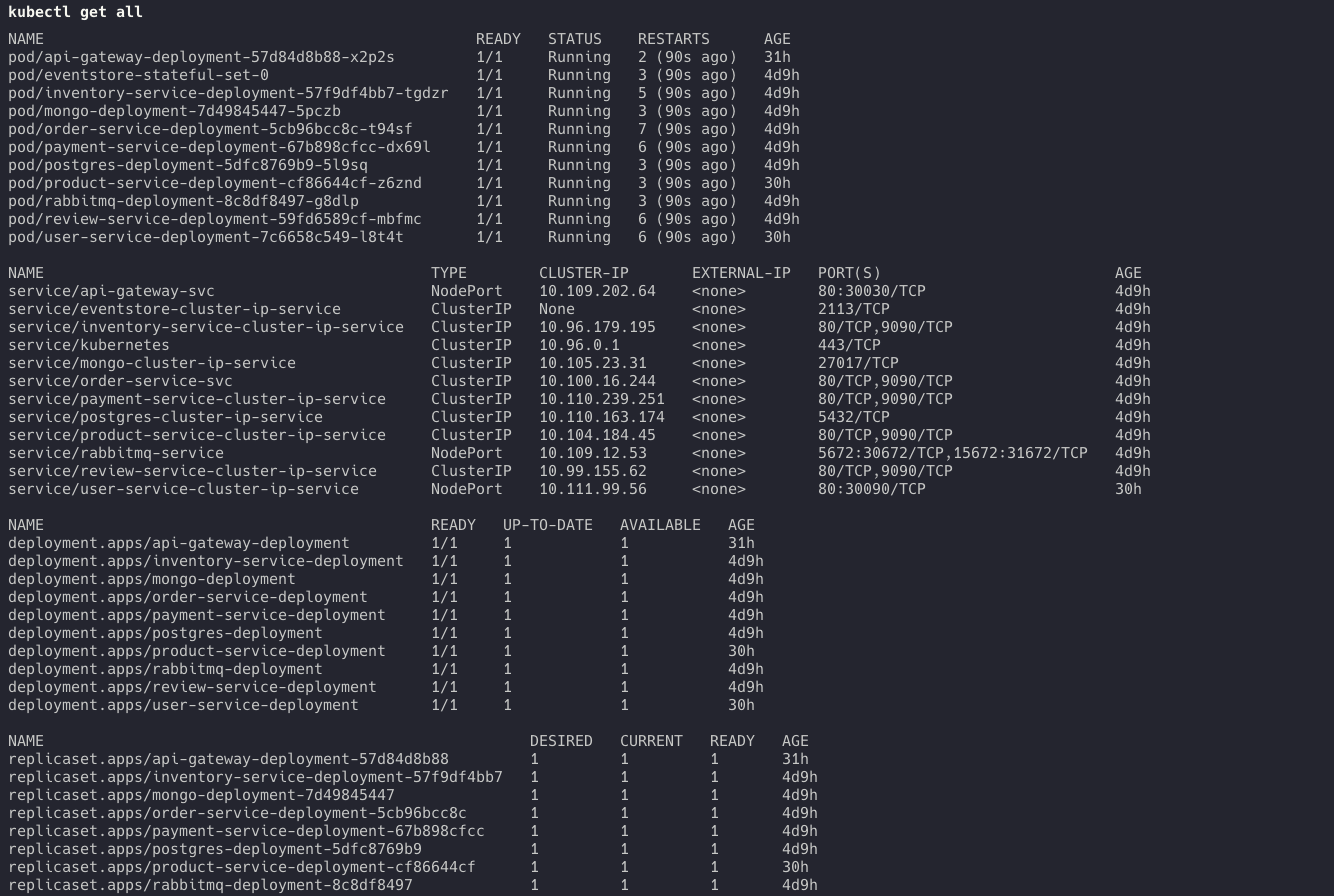Getting started
Software requirements
- Docker desktop
- Local kubernetes cluster (i.e minikube)
- Java 18 (Optional)
- Node.js 18 (Optional)
How to run
- Ensure that docker is running.
- Ensure that a local kubernetes cluster is running. Recommended config for the cluster is: 8 cpu and 8192 memory
- Give execute permission for
deploy-apps.shfile by running
chmod +x ./deploy-apps.sh
- Deploy kubernetes cluster by running this command
./deploy-apps.sh all
- If you don't want to re-deploy infrastructure services: postgres, mongodb, eventstore and rabbitmq, just run this command
./deploy-apps.sh all
- Verify that all pods are running well by running
kubectl get all
Get the access token to call authorized api endpoints
Register an user
- Get the url to the
user-service NodePortby runningminikube service user-service-cluster-ip-service - Send a post request to create an user
curl -d '{"username":"test", "email":"test@gmail.com", "password": "test", "role": "USER"}' -H "Content-Type: application/json" -X POST <url-to-user-service-node-port>
Sign the user in
These steps will illustrate the process to get access_token with Oauth 2.0 authorization code flow
- Go to browser and go to this url
<url-to-service>/oauth2/authorize?response_type=code&client_id=eshop&scope=openid&redirect_uri=https://springone.io/authorized&code_challenge=QYPAZ5NU8yvtlQ9erXrUYR-T5AGCjCF47vN-KsaI2A8&code_challenge_method=S256. Make sure thatclient_idandredirect_uriare same as the example because a client with the redirect uri was created in database whileapi-gatewayis deployed. - You'll be redirected to the login page. Type the username and password for the user.
- After login successfully, you'll be redirected to the
springone.iopage with the url like this.
- Copy the
codefrom the url - send a post request to authorization server with a basic auth header
username: eshop, password: eshop-secretto log in
curl --location --request POST '<url-to-service>/oauth2/token?client_id=eshop&redirect_uri=https%3A%2F%2Fspringone.io%2Fauthorized&grant_type=authorization_code&code=<authorization-code-from-previous-step>' \
--header 'Authorization: Basic ZXNob3A6ZXNob3Atc2VjcmV0' \
--header 'Cookie: csrf_token_806060ca5bf70dff3caa0e5c860002aade9d470a5a4dce73bcfa7ba10778f481=eZE6/yLRPQSXhOvYA3KqlQDSSmKq+dDxQHFf/HkSt04='
- Here is an example of a login request
{
"access_token": "",
"scope": "openid",
"id_token": "",
"token_type": "Bearer",
"expires_in": 86399
}
- If you decode the access token with jwt.io, here is an example of payload data
{
"sub": "test@gmail.com",
"aud": "eshop",
"nbf": 1680653930,
"role": "ADMIN",
"scope": [
"openid"
],
"iss": "http://localhost:8080",
"name": "kkhanhluu",
"id": "90b5e3cf-fe53-46c7-9df2-494ffc6f27b7",
"exp": 1680740330,
"iat": 1680653930,
"email": "test@gmail.com"
}
Call request to the API Gateway
- Get the url to the
api-gatewayby runningminikube service api-gateway-svc - Go to
http://<api-gateway-url>/trpc-playgroundon browser, you can find a playground to send request to the gateway - Here is an example request to get list of products

- For the endpoints that need authentication (i.e: create order), you need to send the header
Authorization: Bearer <access-token>along with the request.